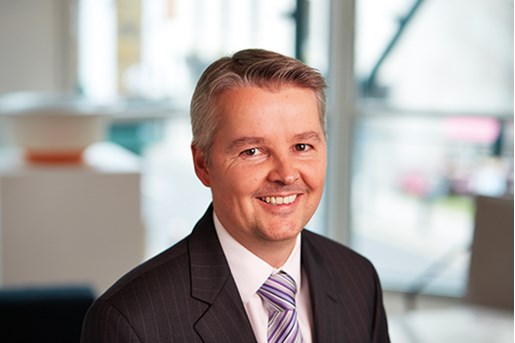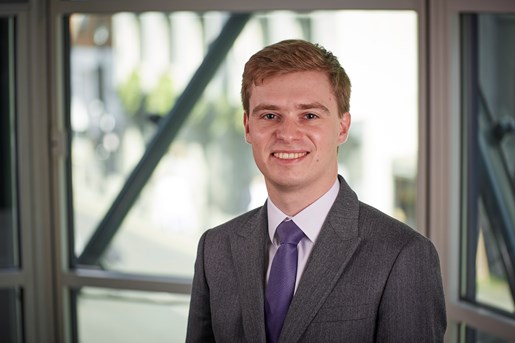The Smart Export Guarantee (SEG) scheme, the Government's replacement for the feed-in tariff (FIT) scheme, went live on 1 January 2020. As outlined in our previous article Smart Export guarantee – a new route to market, the SEG is very different from the FIT.
Whilst the FIT was a Government subsidy, the SEG is an industry-led scheme underpinned by new supply licence conditions, requiring large electricity suppliers (and allowing smaller electricity suppliers) to offer tariffs at which they will purchase electricity from small-scale, low-carbon generators.
To help such generators apply for and receive SEG payments from electricity suppliers, Ofgem committed to publishing a series of guidance documents for generating technologies. On 12 December 2019, Ofgem released guidance for anaerobic digestion (AD) generators on how to meet the SEG criteria (Guidance).
Eligibility
In order to be eligible to receive a tariff from a SEG licensee, a generator seeking payments for an anaerobic digestion (AD) installation must demonstrate that all the electricity that they are claiming payments for has been produced using sustainable biogas. Sustainable biogas is biogas that either:
- meets the greenhouse gas criteria and is made from solid biomass that meets the land criteria,
- is made from feedstock which is waste, or
- consists of a combination of both of the above.
Each term in italics needs more unpacking.
The greenhouse gas (GHG) criteria refer to the life cycle greenhouse gas emissions of the biomass being used by the AD installation. Every consignment of biogas must be below the greenhouse gas threshold. The relevant maximum threshold will be 66.7gCO2e/MJ of electricity generated, falling to 55.6gCO2e/MJ of electricity from 1 April 2020 to 31 March 2025 and then to 50.0gCO2e/MJ of electricity from 1 April 2025 onwards.
The land criteria refer specifically to the production of the raw material, such as at the farm, forest or plantation, used by the AD installation. The aim is to discourage use of biomass that was sourced from land with a high biodiversity and carbon stock value.
There are two types of land criteria: for woody biomass and for non-woody biomass.
Woody biomass is any feedstock that is, or is derived from, wood. To meet the land criteria for woody biomass, it must come from a sustainable source (the Guidance goes into detail about this).
Non-woody biomass cannot be derived from a protected source of land. Ofgem has published a useful table for guidance[1]. On the other hand, non-woody biomass that is or was an arboricultural residue, a processing residue or an energy crop which previously received financial assistance under the Energy Crops Scheme, will be deemed to automatically meet the land criteria.
Any liquid feedstocks that are not waste automatically do not meet the definition of "sustainable biogas" and so will not be eligible for a SEG tariff.
AD SEG generators must also comply with the general SEG eligibility criteria: be suitably certified, have an export meter and have an export meter point administration number (MPAN). The general SEG Guidance for Generators has more detail.
Fuel Classification
In order for generators to know what GHG and land criteria they are required to meet and report against, they need to first understand the classification of their fuel and feedstock(s): is it a product/co-product, waste or a type of residue? Ofgem have produced a fuel classification flow diagram to assist generators[2], and Appendix 2 to the Guidance contains a table of common fuel classifications.
Applying for SEG payments
An AD installation submits an application for a SEG export tariff to its chosen SEG licensee (which need not be the same company as its energy supplier). The SEG licensee will say exactly what information it needs from the generator in its application. The SEG licensee will review the application and provide written confirmation of the terms for receiving payments, which is effectively the SEG contract between the generator and the licensed supplier.
AD generators also need to submit a separate form to Ofgem (the SEG Compliance Declaration) which is on the Ofgem website[3]. This simply says that the generator intends to complete a Fuel Measurement and Sampling questionnaire and agree Fuel Measurement and Sampling procedures with Ofgem before submitting their first quarterly declaration. The date of formal acknowledgement from Ofgem (AD Reporting Start Date) will be the first date from which SEG payments must be made by the SEG provider and the date from which all future reporting dates will be calculated. Ofgem recommends that a generator takes a meter reading as soon as possible following the AD Reporting Start Date.
Ongoing reporting requirements
AD SEG generators must also meet ongoing requirements to report against their feedstocks used in order to be eligible to receive SEG Payments for any period. These are the provision of a quarterly declaration, an annual declaration, and, for installations with a total installed capacity ≥1MW, an independent annual sustainability audit report. There are templates for each of these on the Ofgem website.[4]
Failure to provide these reports to Ofgem will mean generators do not receive confirmation from Ofgem that they have met their sustainability and reporting requirements and SEG Licensees will not be obliged to make SEG payments for the periods to which they relate.
Ofgem will review the declarations and, where necessary, audit reports, and confirm installations’ compliance with the requirements. A generator will be able to provide this confirmation to their SEG licensee to confirm ongoing eligibility for SEG payments.
Fuel Measurement and Sampling (FMS)
AD Generators are required to submit Fuel Measurement and Sampling questionnaires to Ofgem in order to ensure that SEG payments go towards electricity generated using sustainable biogas. These procedures are required in order to determine data such as the quantity of fuel used in a quarter and the energy content of the fuel used in a quarter.
An AD Generator must provide a completed FMS Questionnaire[5] as soon as it notifies Ofgem that it intends to receive SEG payments. Ofgem will then agree a set of reporting procedures with the AD Generator on a case-by-case basis.
Consignments
For the quarterly and annual declarations mentioned above, AD Generators must report on the sustainability criteria[6] of each biomass consignment[7] to ensure that such sustainability is traceable through the supply chain. Ofgem recommends that, if possible, AD Generators should ensure that a consignment of biomass is not mixed with any other consignments. If the feedstock has a binder added which forms more than 2% of the consignment, Ofgem views this as a separate consignment.
Where AD Generators use feedstocks which are mixed (either at the generator's site or at another point in the supply chain), Ofgem suggests a "mass balance system" should be used to ensure the biomass and its associated sustainability data are verifiable.
Ofgem recommends that parties in a supply chain for AD Generators utilising mixed feedstock should undertake a monthly periodic review of site-level sustainability data.
These requirements should be familiar to AD generators as they are similar to those for the FIT.
Voluntary Schemes
AD Generators may consider utilising voluntary schemes as evidence that they are complying with the sustainability criteria. Such voluntary certification schemes (often audited by a third party) provide evidence that a fuel meets all or part of the sustainability criteria and, provided that the entire supply chain are also covered by the voluntary scheme, evidence that the entire supply chain meets the sustainability requirements.
Our View
The key to this is complying with the reporting requirements so that Ofgem are satisfied that the electricity is being generated from sustainable biomass. A generator's SEG payments depend on receiving confirmation from Ofgem; without such confirmation, a SEG licensee is not obliged to make SEG payments.
AD generators will therefore need to make sure that they can trace the sustainability of their feedstock back through the supply chain and have appropriate contractual protection in place both to require suppliers to provide the necessary proof of sustainability and for suppliers to compensate the generator for loss of SEG payments due to the feedstock not being sustainable.
The renewables team at Addleshaw Goddard has first class experience advising sponsors on AD projects and can help you ensure these risks are fully mitigated. Please contact us if you would like us to help you.



1 p.34 Guidance
5 Available at: https://www.ofgem.gov.uk/publications-and-updates/fit-anaerobic-digestion-fuel-measurement-andsampling-fms-questionnaire-and-guidance-note
6 Although not a definitive list, Ofgem consider the following should be taken into account: (i) feedstock type; (ii) country of origin; (iii) feedstock classification; (iv) compliance with the Land Criteria; and (v) compliance with the Greenhouse Gas Criteria.
7 Ofgem defines "consignment" as "the quantity of biogas attributable to the consignment of feedstock from which that biogas was made".


